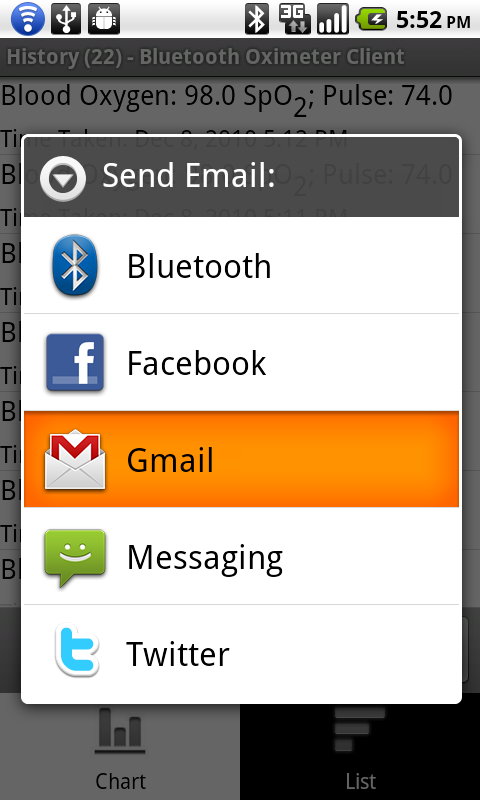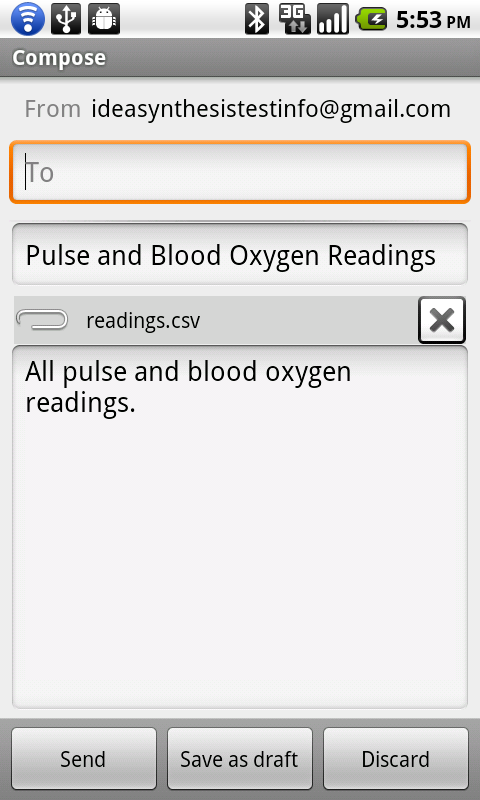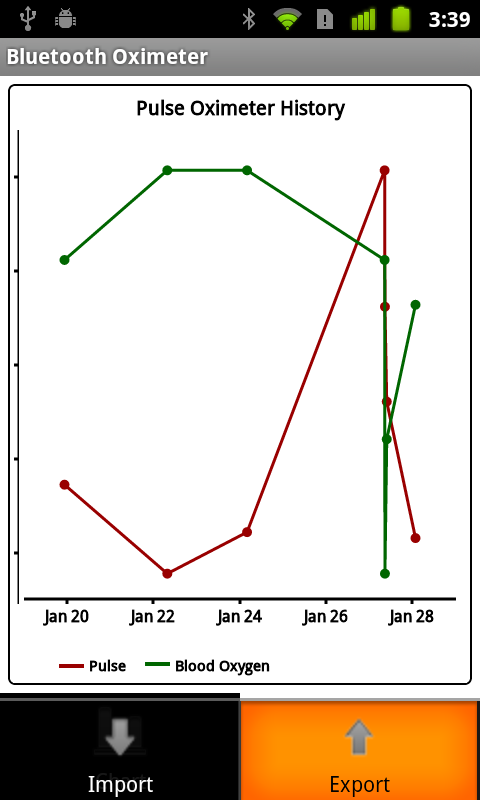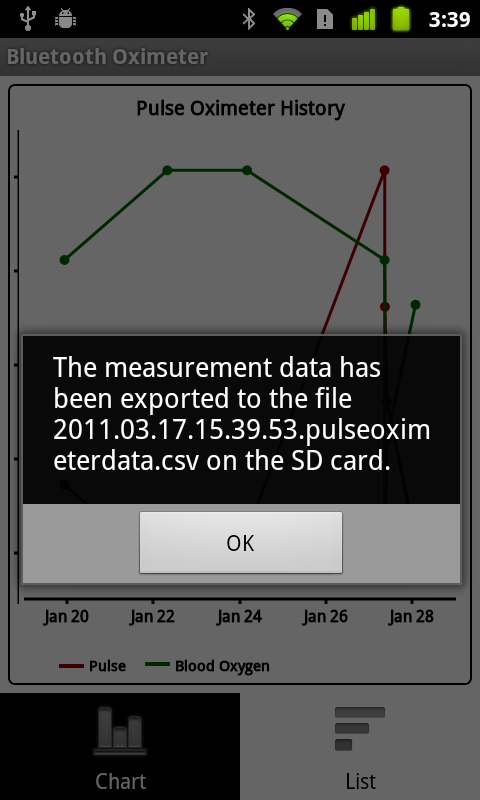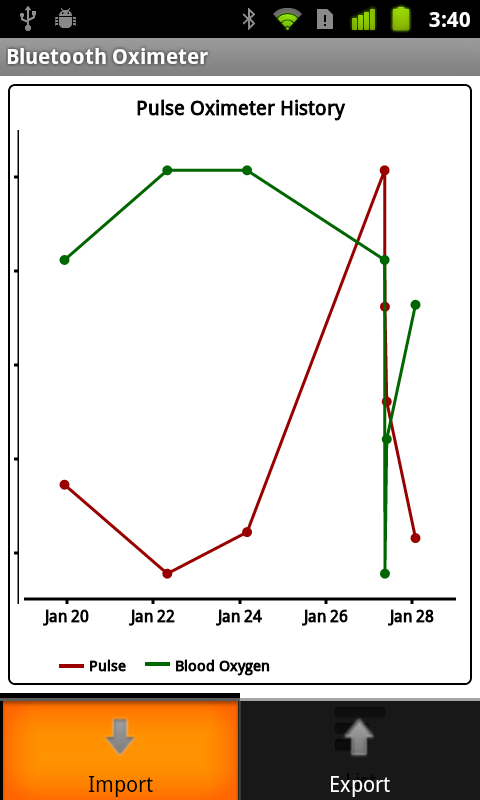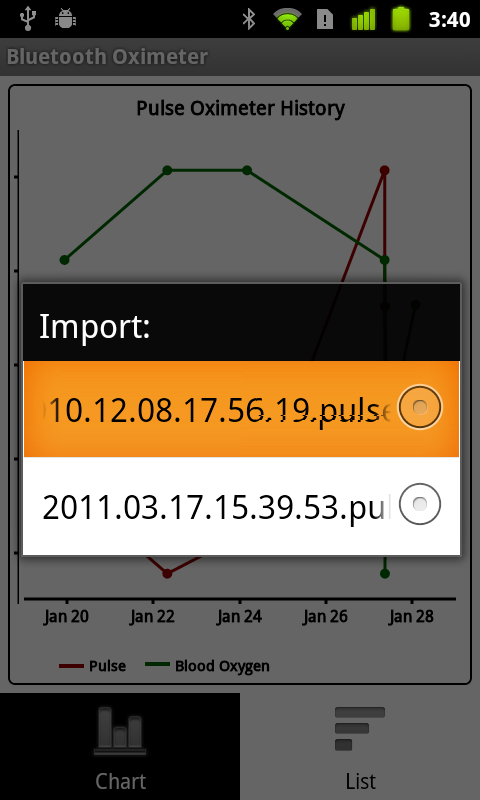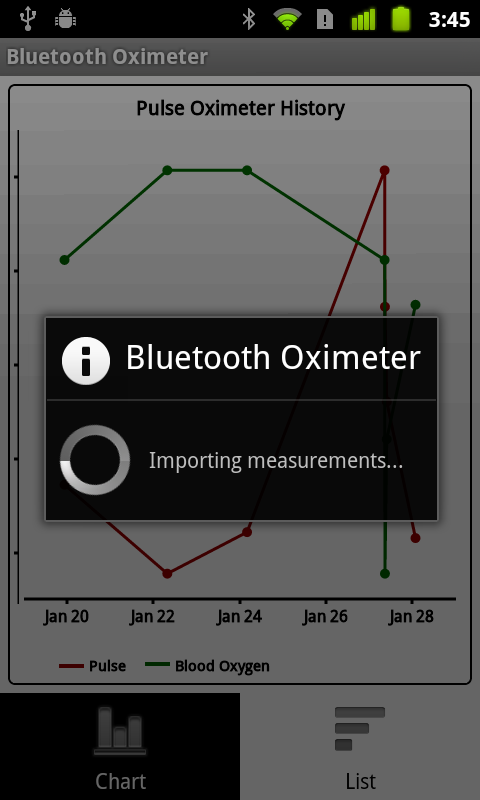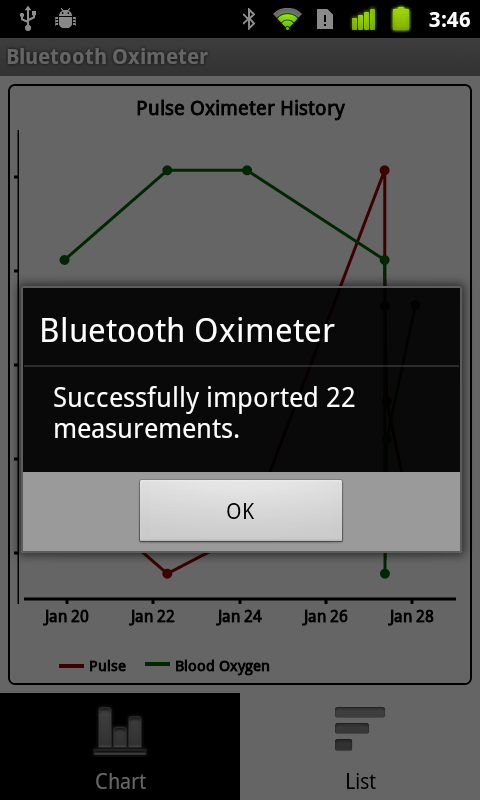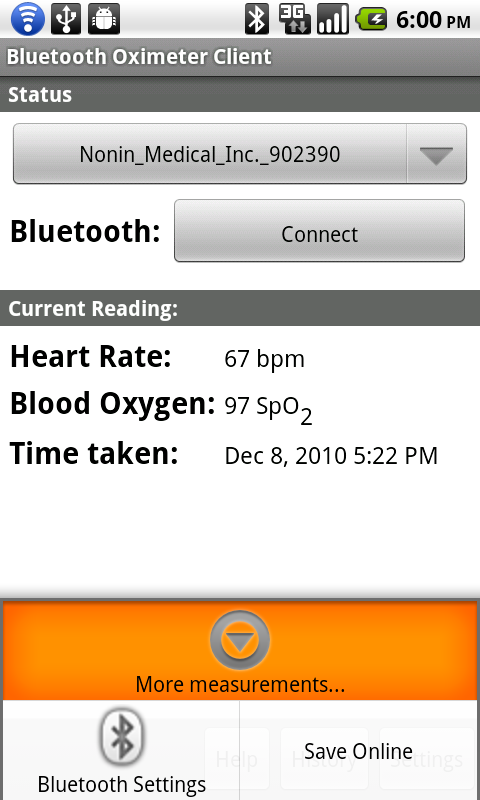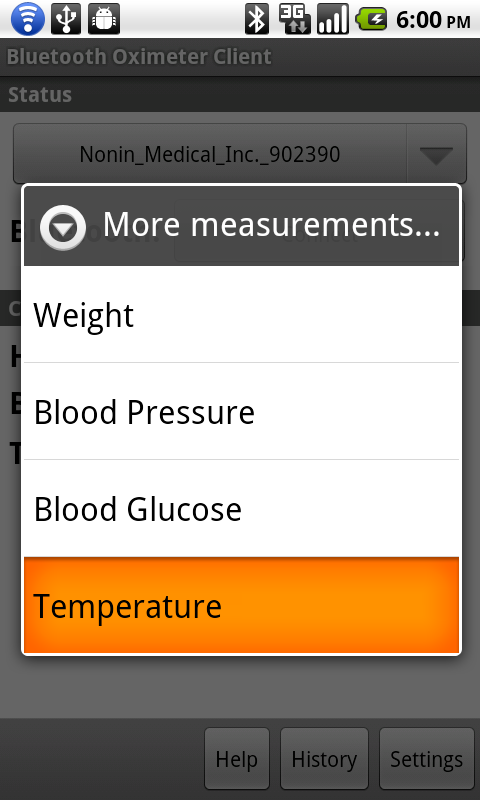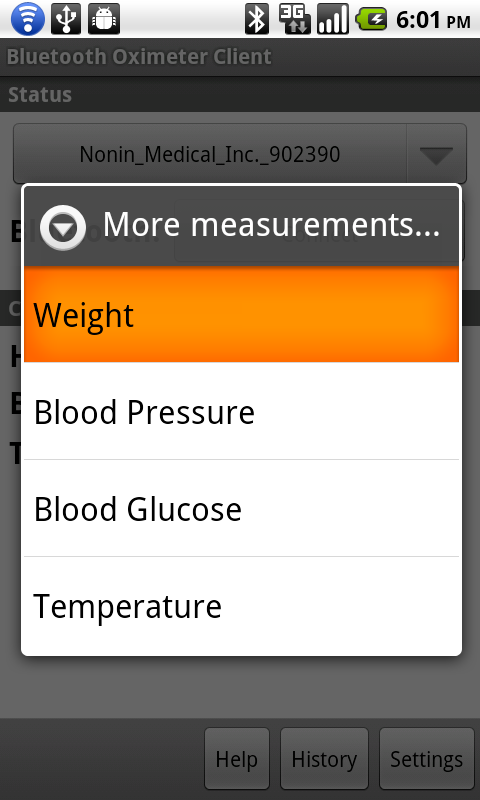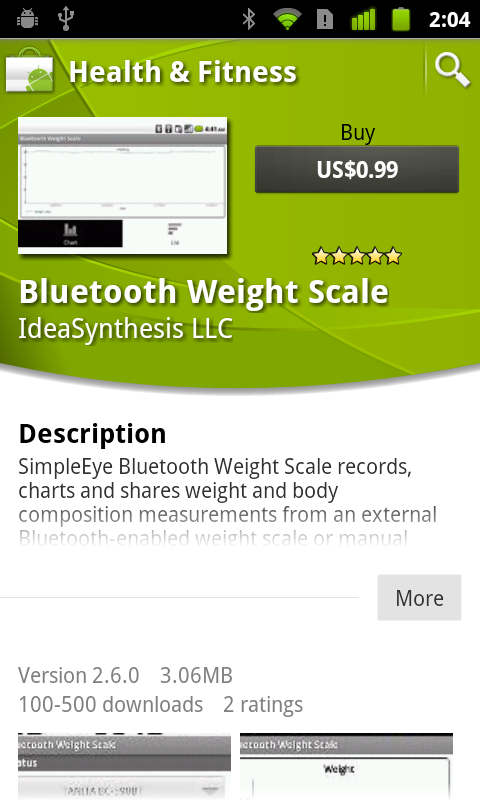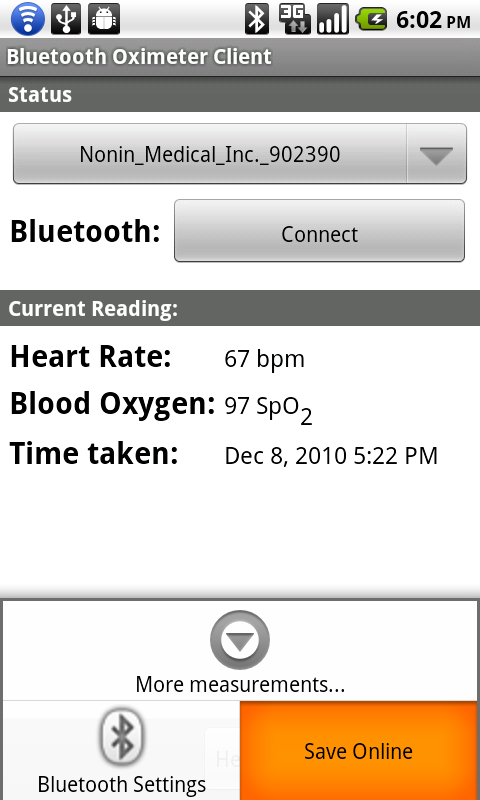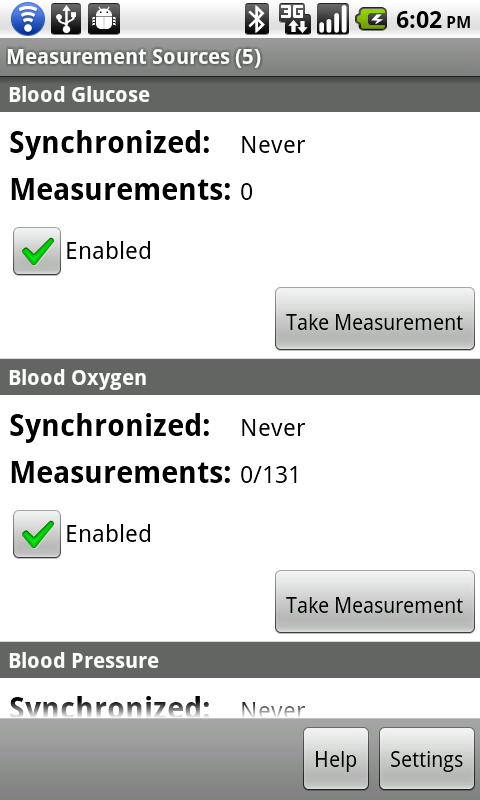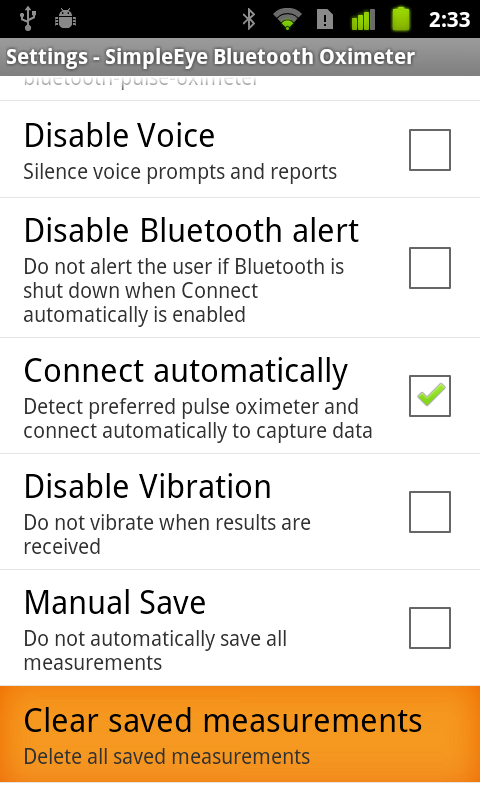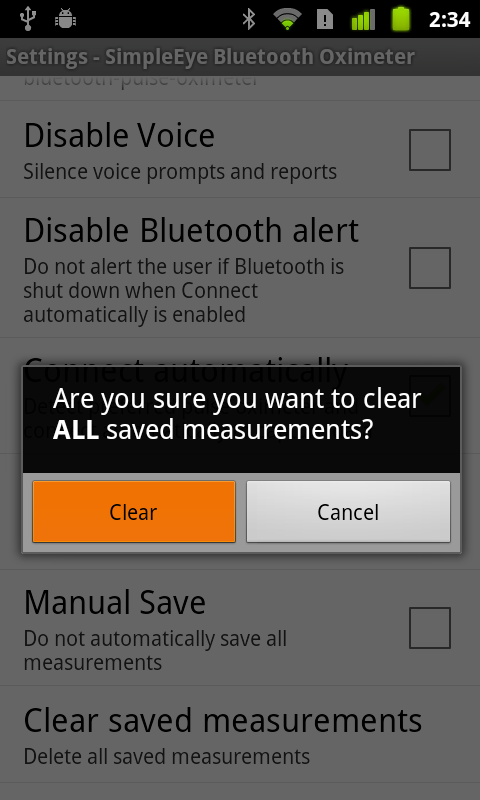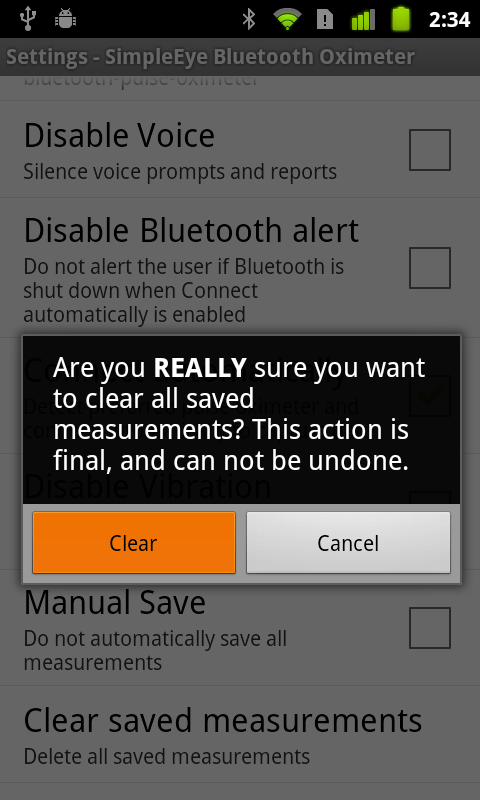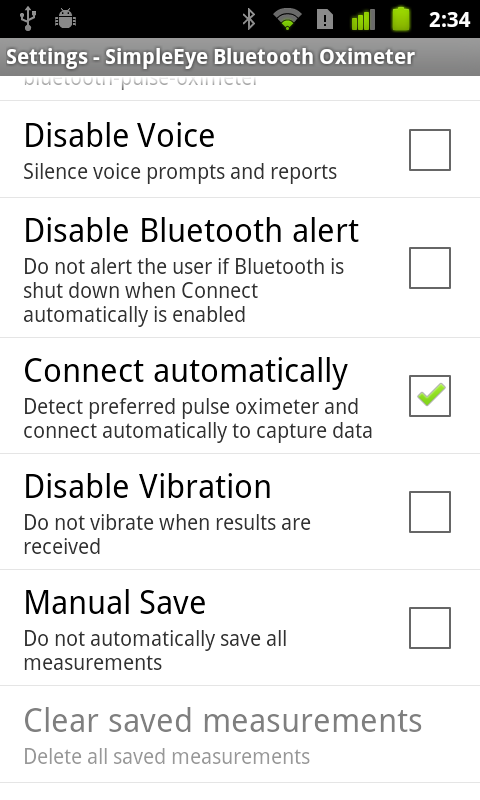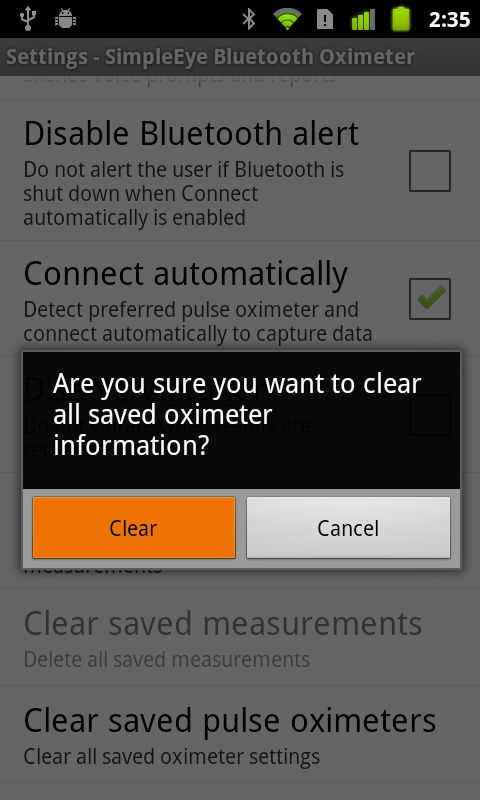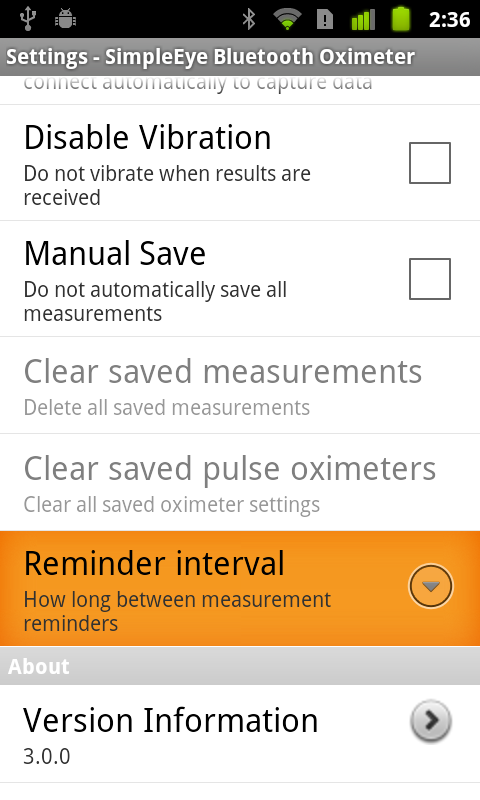- Compatibility
- Setting up the connection between your pulse oximeter and your mobile device
- Collecting measurements from your pulse oximeter
- Manual measurement entry
- Reviewing historical measurements
- Share measurements
- Measurement data backup and recovery
- Other measurements
- Save measurements to an online health record
- Application settings and information
- Reminders
- Sending Feedback
Android Device Compatibility: SimpleEye Bluetooth Pulse Oximeter has been tested and verified with Android 2.0 (Motorola® Droid on Verizon®), 2.1 (LG® Ally on Verizon® and T-Mobile® myTouch 3G Slide running HTC® SenseUI) and 2.2 (Google® Nexus One on T-Mobile®). Some minor issues that should not prevent measurements from being taken have been observed with Android 2.1 devices running the HTC® Sense UI: the Bluetooth implementations on these devices have unresolved errors.

The application will then check to see if Bluetooth is enabled. If not, it will request that Bluetooth be turned on, as shown in Figure 2 below. Bluetooth must be activated to use the Bluetooth features of the software.

Tap to approve the request: Bluetooth will turn on as shown in Figure 3 below.

If this is the first time the application is started, the help screen will show as in Figure 4 below.

Tap to close the help screen: you can tap the button at any time to access this screen.
The main measurement recording screen will show. Tap the Menu button to show the application menu as seen in Figure 5 below.

Nonin Onyx II® 9560 Bluetooth pulse oximeter:
- Put your finger into your pulse oximeter to activate it: wait until the indicator light on the front is flashing green.
ChoiceMmed MD300C318 Bluetooth pulse oximeter:
- Press the power button on the front: wait until the oximeter display turns on, then put your finger into your pulse oximeter to activate it. Once activated a Bluetooth symbol will flash next to the battery indicator.
Once the pulse oximeter is ready, tap the Select button as shown in Figure 5 above, then tap the item as shown in Figure 6 below.

The Android Bluetooth settings screen will open up and a scan will be performed: the phone should now find the pulse oximeter as shown in Figure 7a and 7b below. The caption on the item will show Pair with this device to indicate that the pulse oximeter is not paired.
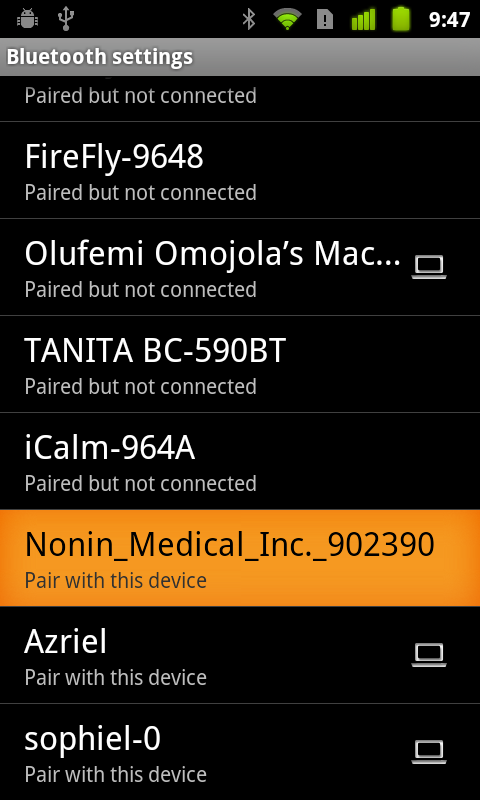
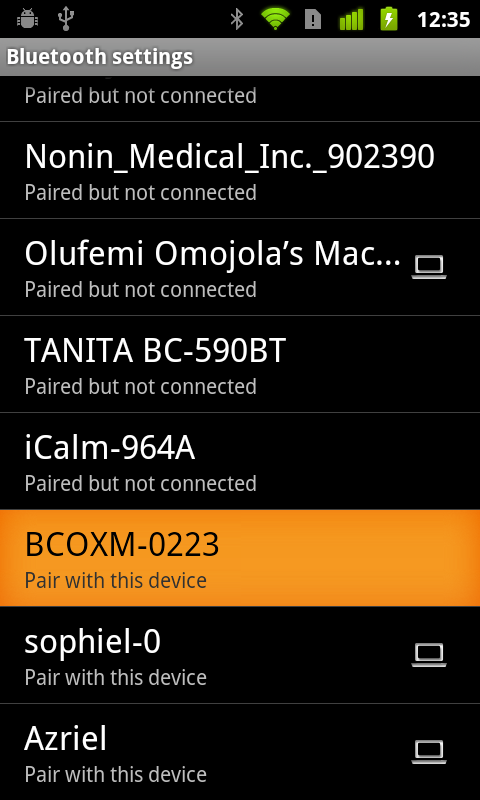
Tap the pulse oximeter item to start the pairing process: a pairing key dialog will be shown as in Figure 8a and 8b below. Enter the proper pairing code:
- For the supported Nonin pulse oximeters the code is the last 6 digits of the Bluetooth name: in Figure 7a above the pairing code is 902390 as shown in Figure 8a below.
- For the supported ChoiceMmed pulse oximeters the code is 0000 as shown in Figure 8b below.
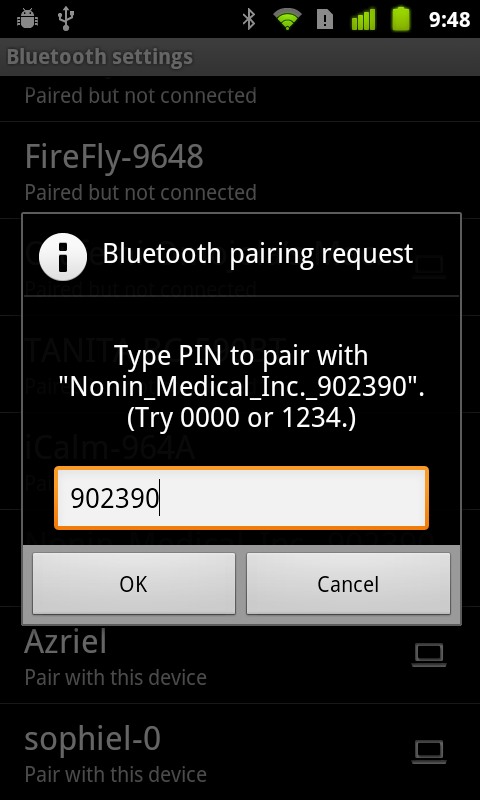
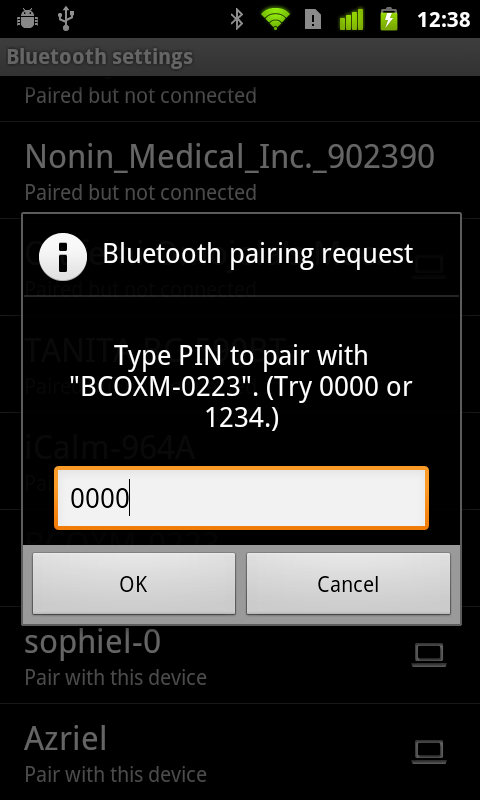
Tap : the pairing process will complete and the pulse oximeter caption will change to Paired but not connected to indicate that the pairing process is complete, as shown in Figure 9a and 9b below.
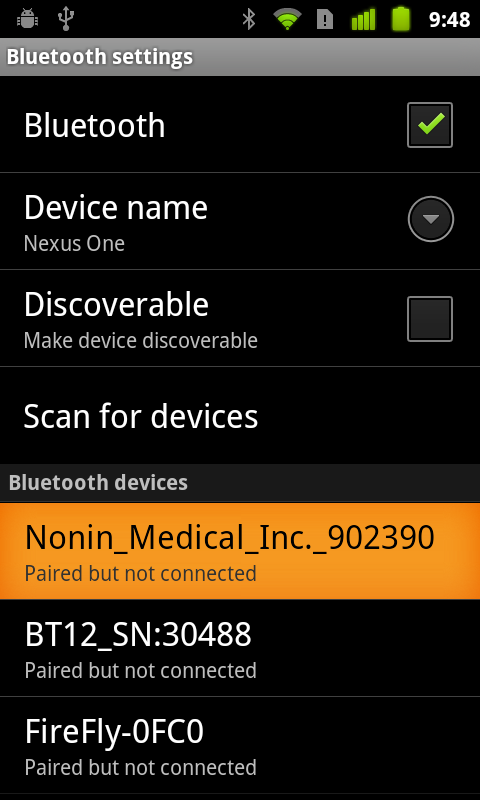
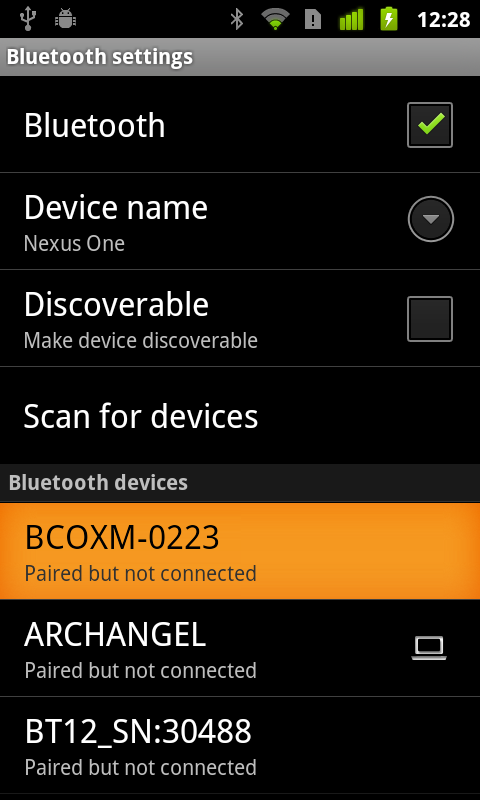
You are now ready to go! Tap the Back button to return to SimpleEye Bluetooth Pulse Oximeter.

Tap Yes to accept it: you will then be prompted to set this pulse oximeter as your default pulse oximeter if an existing pulse oximeter is saved, as shown in Figure 11 below. Tap to do so.

The oximeter will now be selected and the Connect button will now be enabled as shown in Figure 12 below.

If your pulse oximeter is not currently on, turn it on now (as discussed here) and once the pulse oximeter is ready tap the Connect button to connect to the pulse oximeter. A connection will be initiated to the Bluetooth pulse oximeter as shown in Figure 13 below.

Press the button to return to the application: it will automatically detect that a new pulse oximeter has been added and will prompt you to add it to the list of saved pulse oximeters as shown in Figure 10 below.

Tap Yes to accept it: you will then be prompted to set this pulse oximeter as your default pulse oximeter if an existing pulse oximeter is saved, as shown in Figure 11 below. Tap to do so.

If the pulse oximeter selects automatic connections you will be prompted to turn on automatic pulse oximeter connections as showin in Figure 12 below.

You will then be asked if you wish to connect to the pulse oximeter right now as shown in Figure 13 below. Also, if you enabled automatic connections then a notification will appear.

If the pulse oximeter is a ChoiceMmed MD300C318 you will see a notification to ensure that the pulse oximeter is showing the Bluetooth connection icon on the oximeter screen, as shown in Figure 14 below.

The Connect button will now be enabled as shown in Figure 15 below.

If your pulse oximeter is not currently on, turn it on now (as discussed here). If automatic connections are enabled and supported by the oximeter (the Nonin 9560 II BT supports automatic connections) then as soon as the pulse oximeter is ready the connection will be established; otherwise tap the Connect button to connect to the pulse oximeter as shown in Figure 16 below.

Once connected, the select button will be disabled and the Connect button will switch to Disconnect. To disconnect from the pulse oximeter before a measurement is taken, you can tap the button. As soon as a measurement is available, the pulse oximeter will transmit it and the pulse and blood oxygen level will be displayed. This is shown in Figure 17 below.

If voice reports are enabled (they are enabled by default) the application will read out the most recent measurement values at this time.
Note: the supported pulse oximeters can save multiple measurements even when no Bluetooth connection is present: when a connection is then established using SimpleEye Pulse Oximeter all the measurements will be automatically transmitted to the Android device and saved (see Application settings and preferences for more options) for future review. Only the latest measurement will be displayed on this screen: to see older measurements tap History.
Tap the button to disconnect from the pulse oximeter when the measurements have been captured. The connection will be automatically closed when the pulse oximeter turns off.
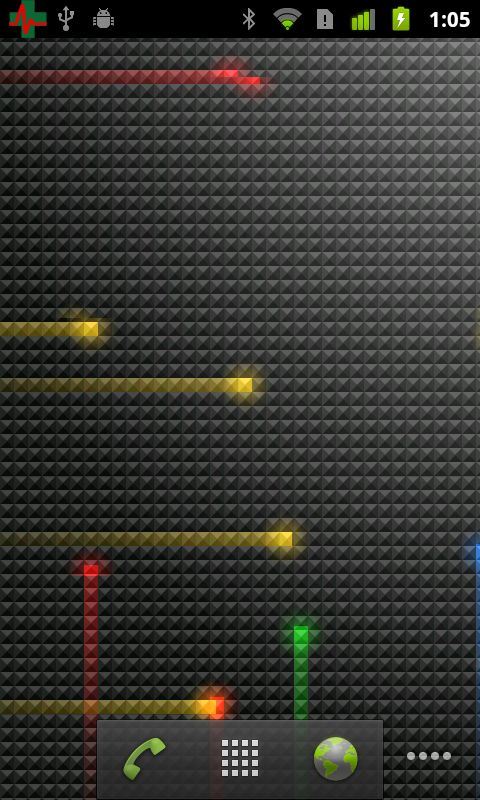
You can then open the notification panel to see the full detail as shown in Figure 64 below. Tapping on the notification will open the application.
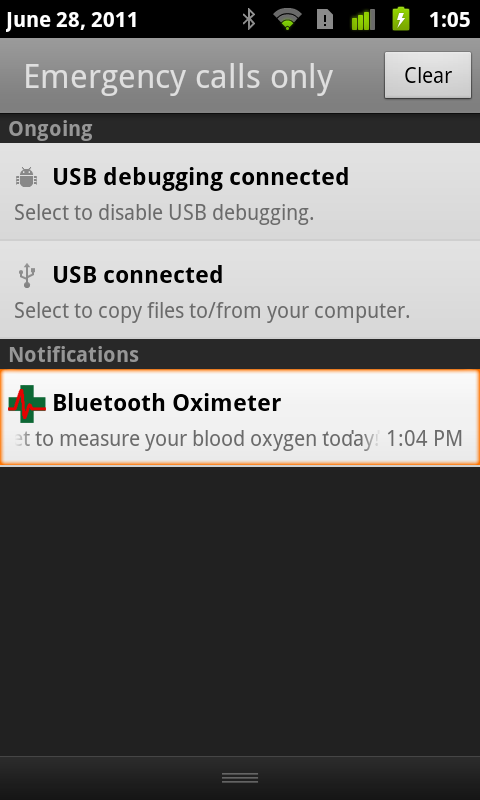
By default notifications are sent if it has been more than 3 days since your last measurement: the reminder interval can be changed as discussed above.
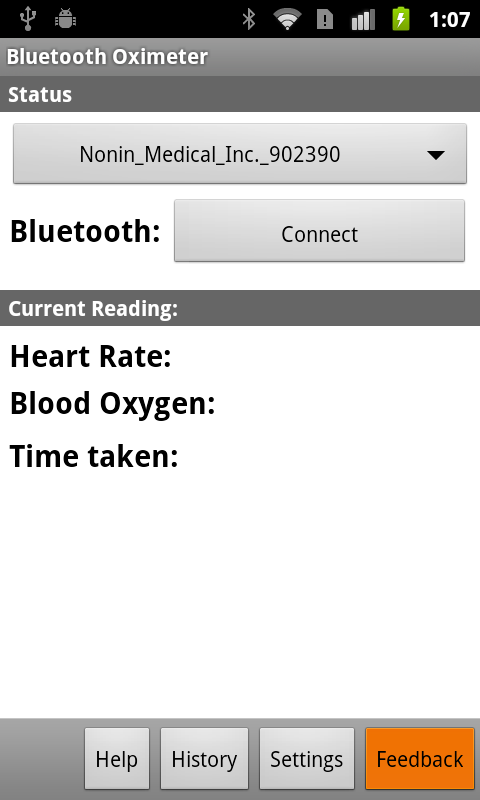
Enter an email address (this is required, so we can get back to you about your requested change) and your comments and press the Submit button as shown in Figure 66 below to send it.
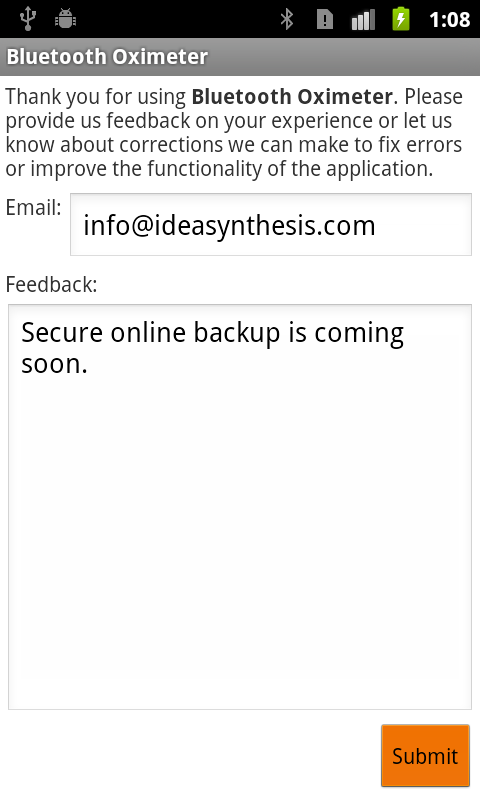
Your submission will be confirmed as shown in Figure 67 below, and that’s it. Thank you!


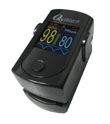






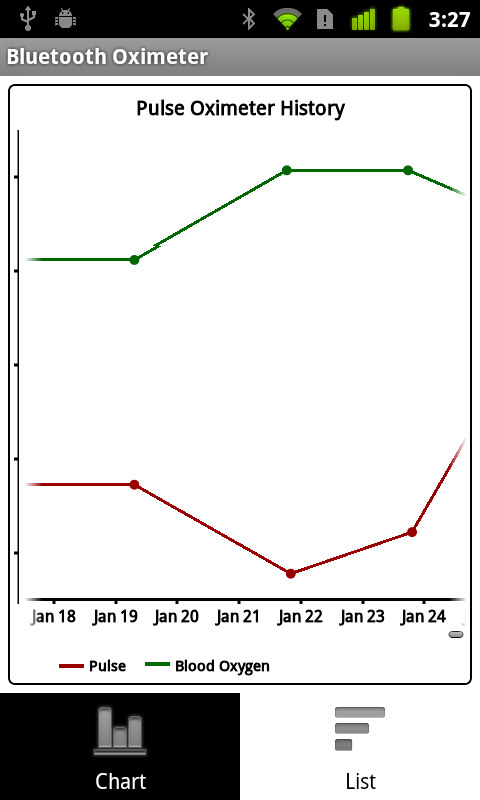

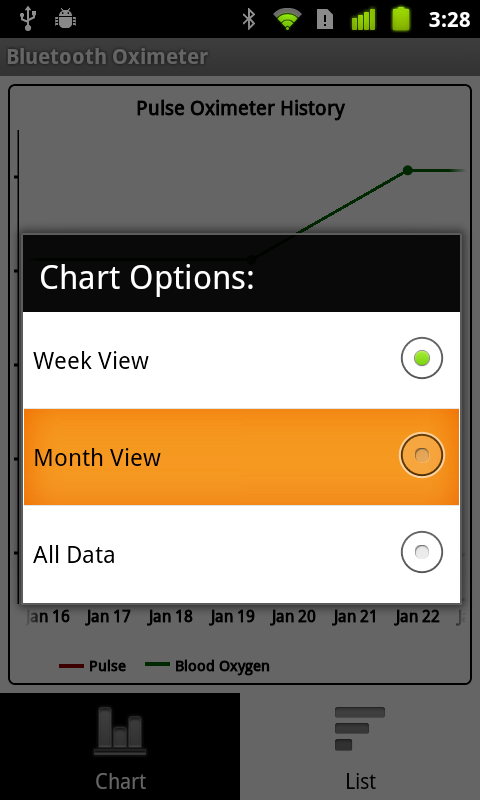
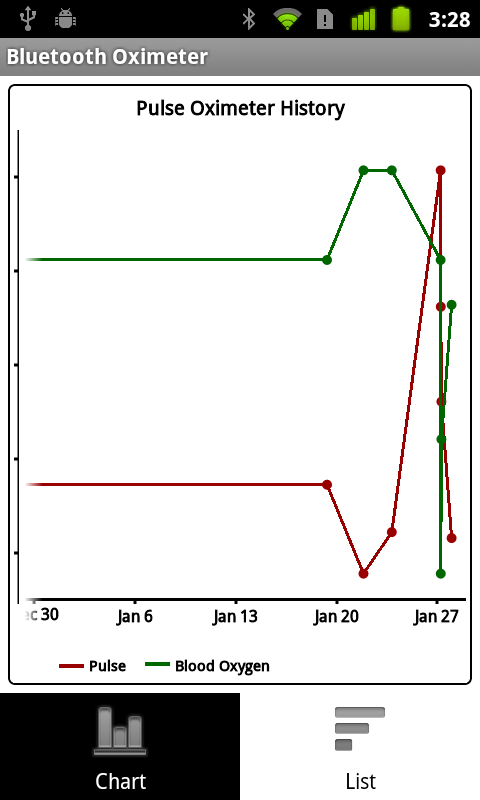
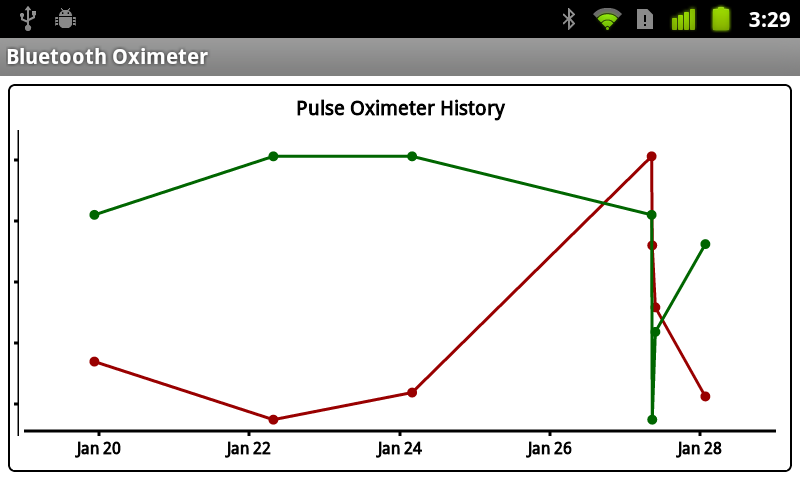
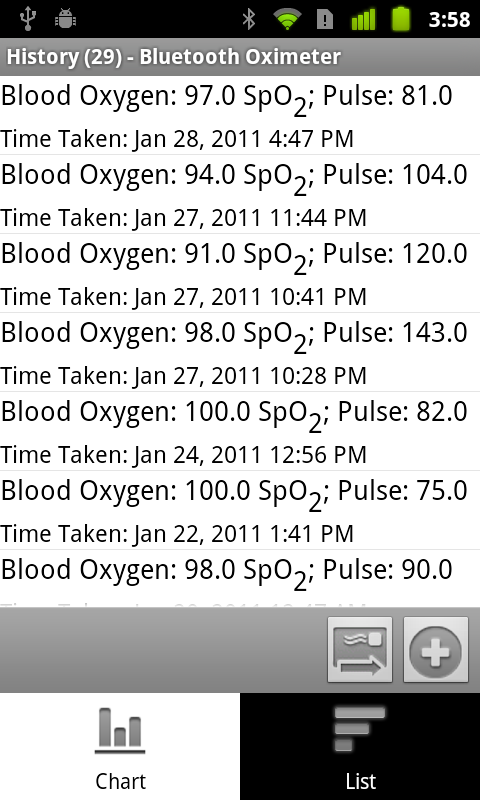
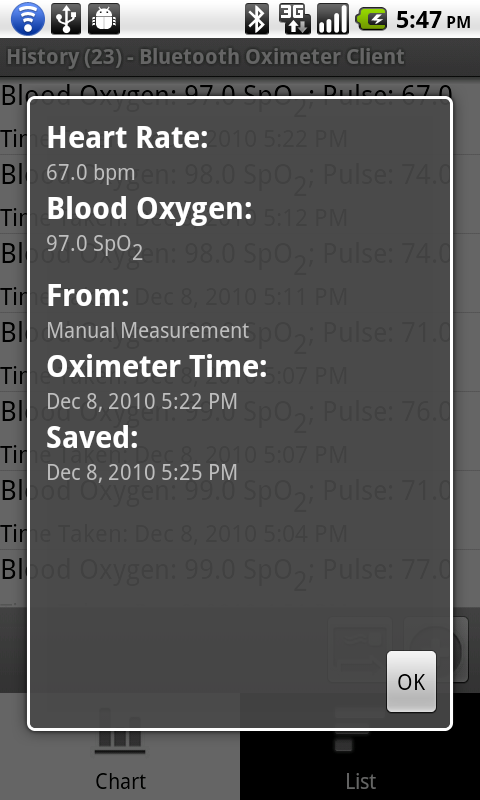
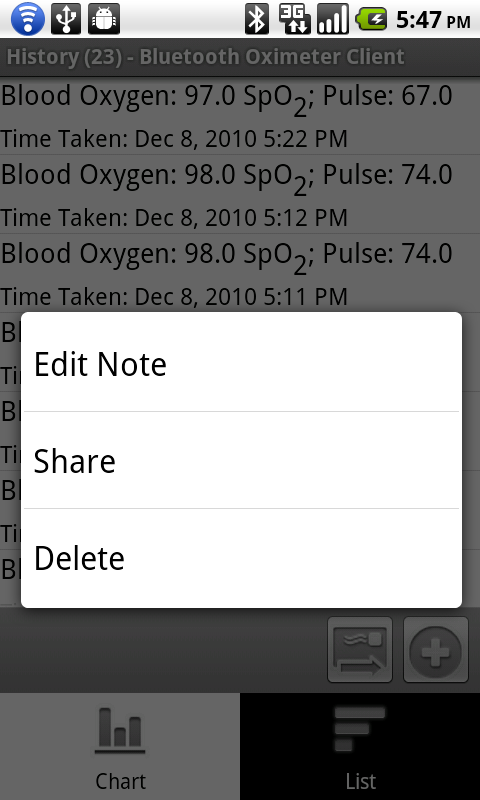
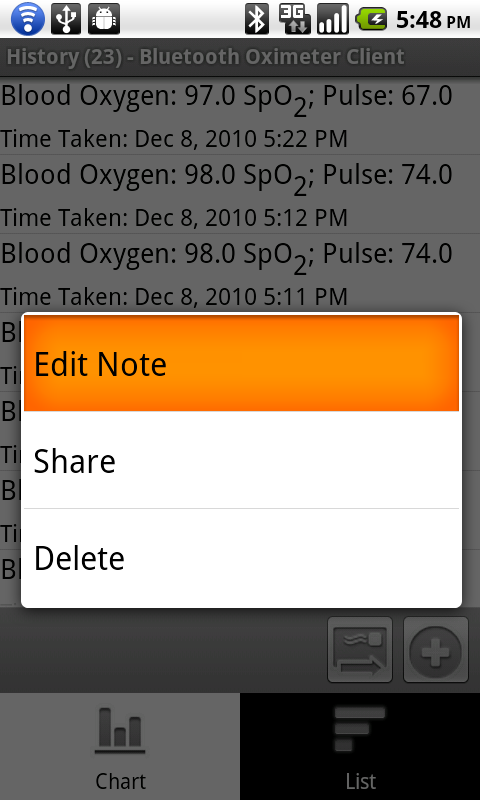

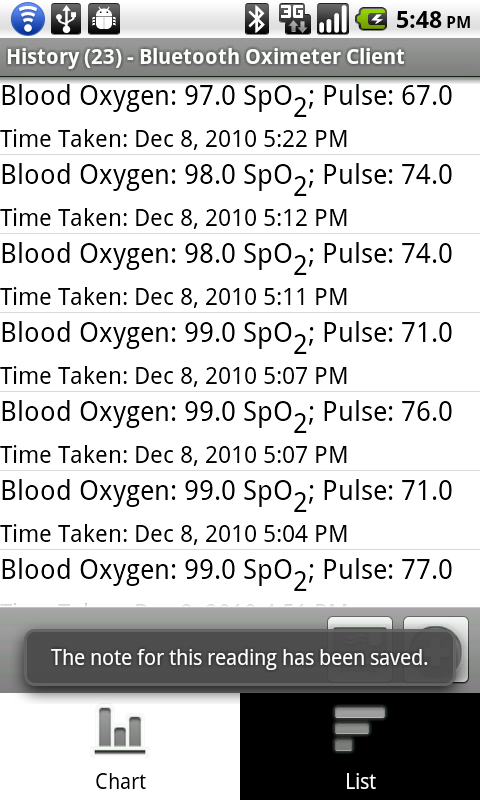
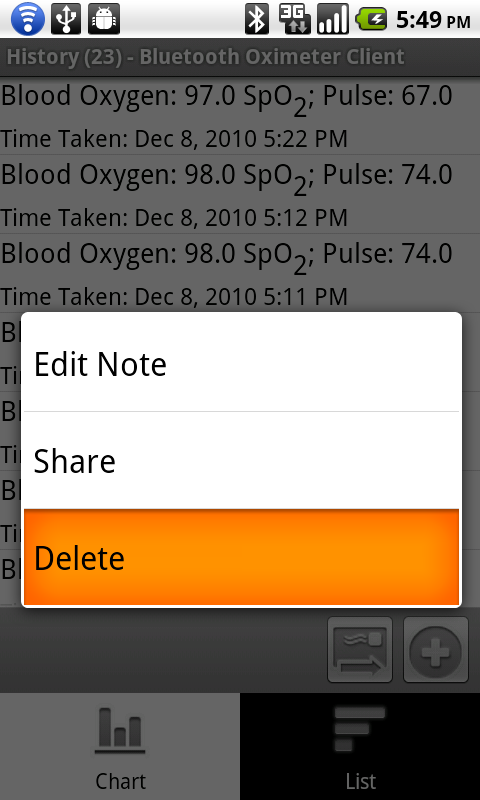
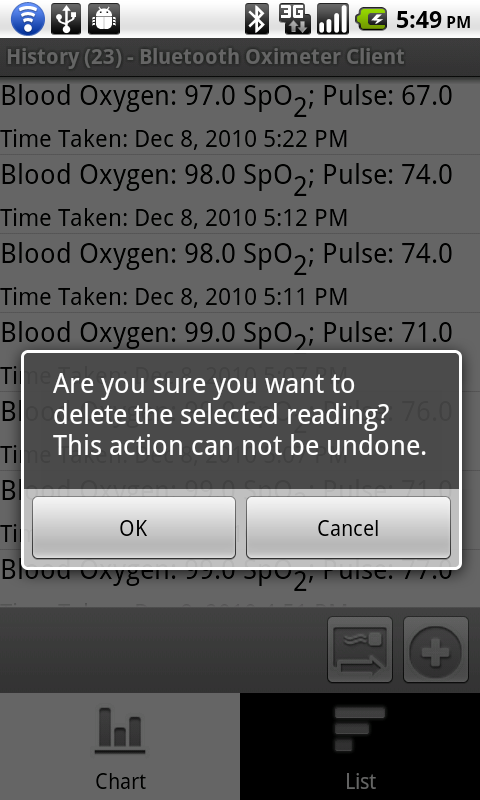
 ) at the bottom of the screen to open up the manual measurement recording screen as shown in Figure 20 above.
) at the bottom of the screen to open up the manual measurement recording screen as shown in Figure 20 above.
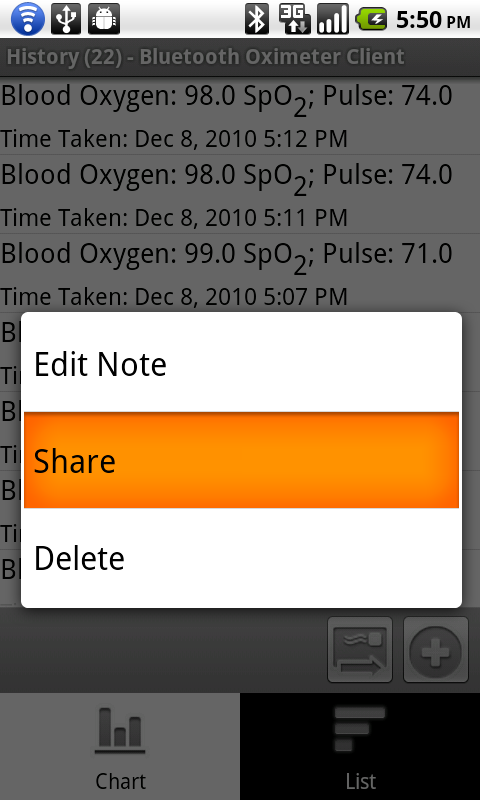
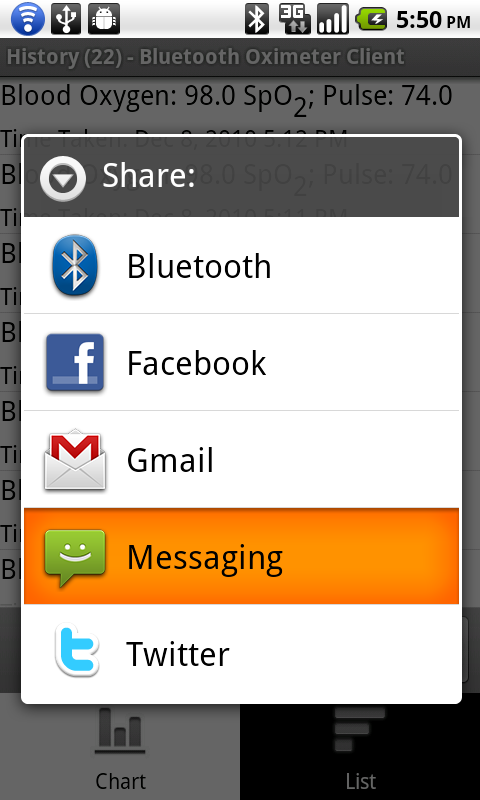
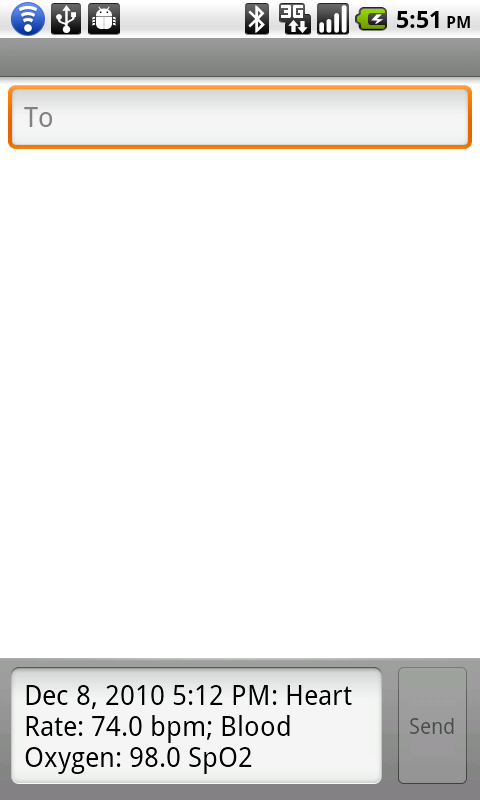
 ) at the bottom of the screen. This will open up the Android share menu as shown in Figure 40 below.
) at the bottom of the screen. This will open up the Android share menu as shown in Figure 40 below.